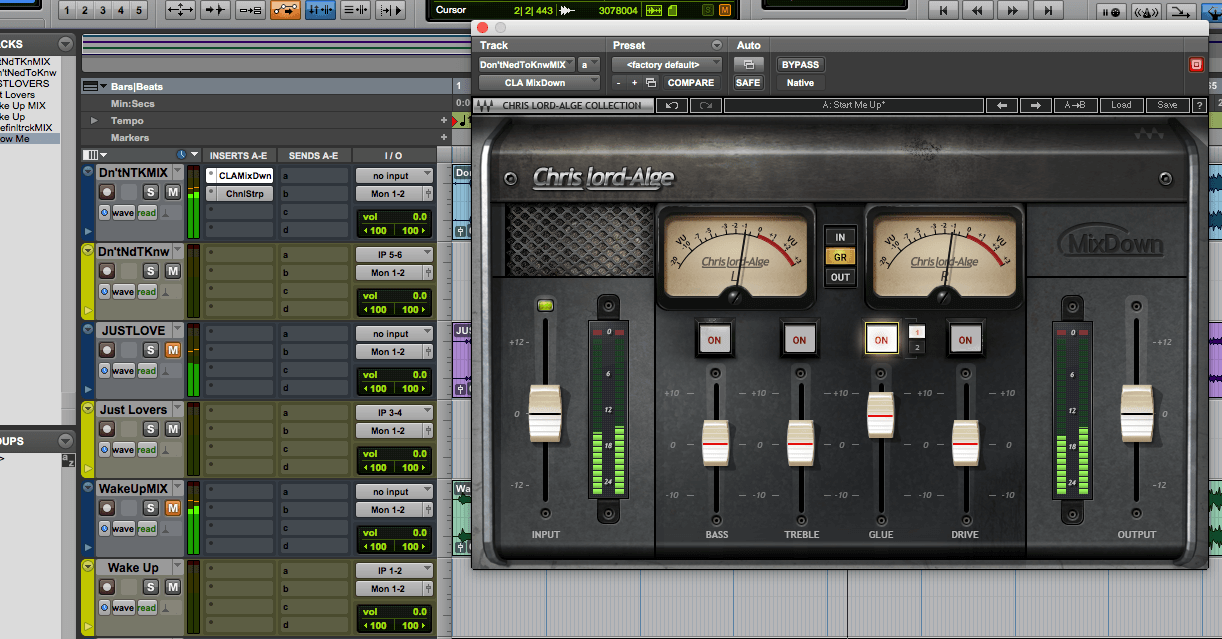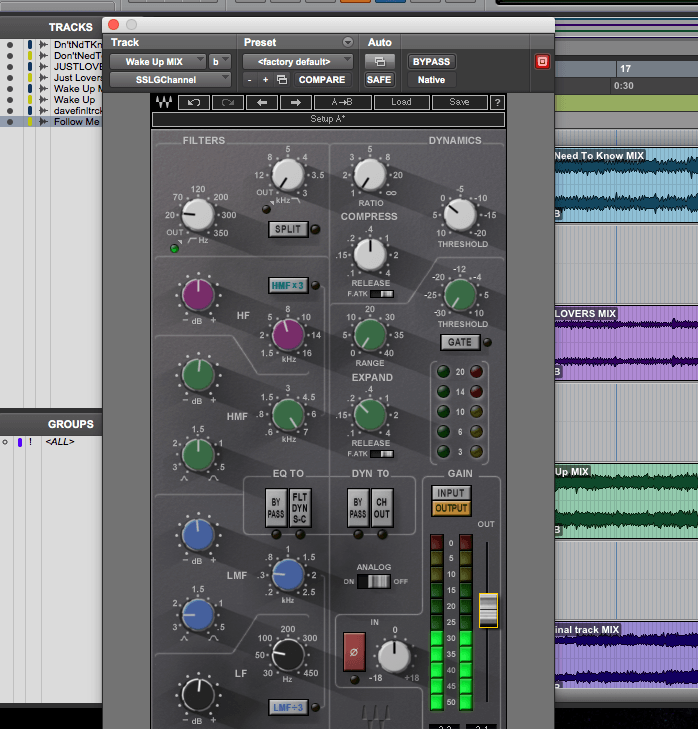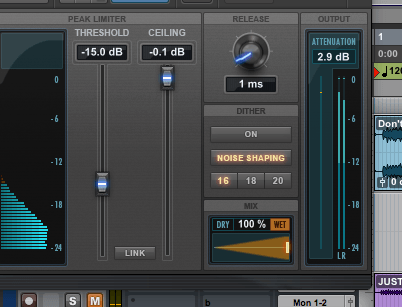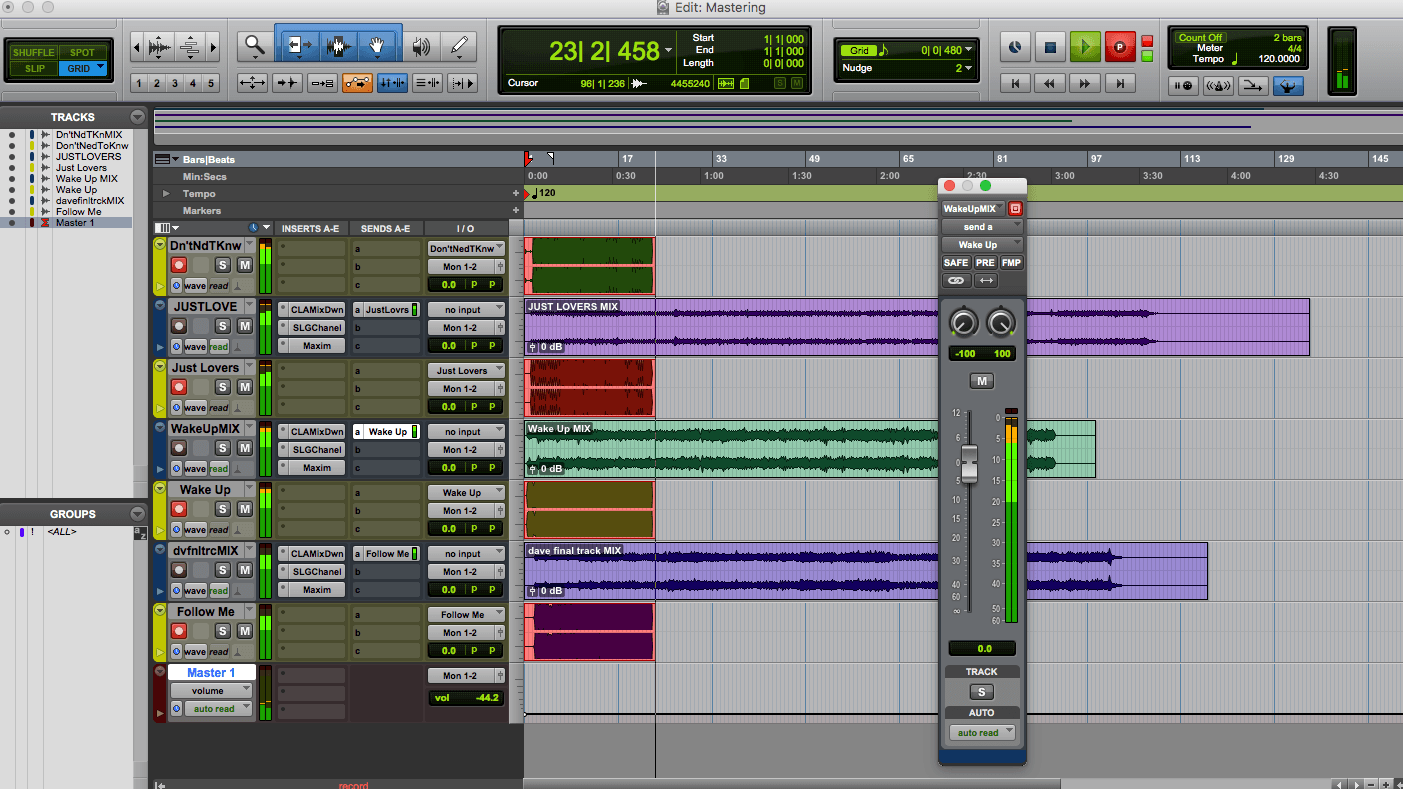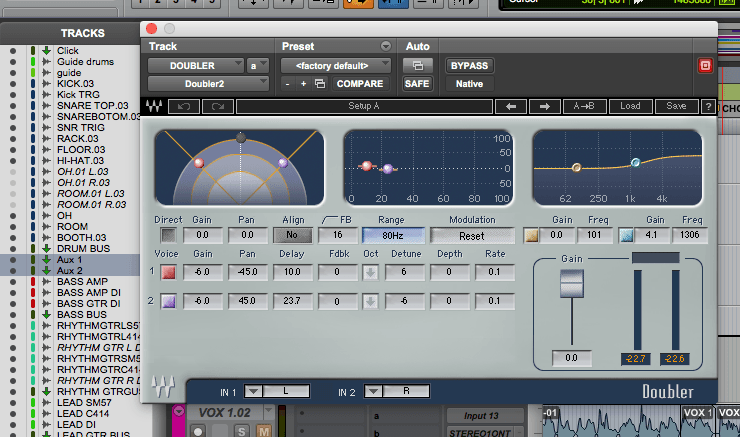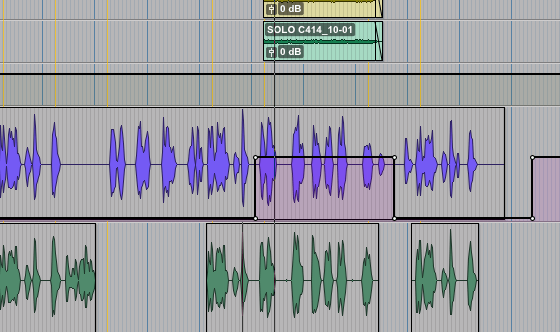Overall, I feel this project went really well besides a few issues that came about towards the end of the project. There were pros and cons to each learning outcome which I will go into detail about.
In terms of achieving learning outcome one, I feel the project started very strong, however my engagement with it decreased towards the end of the semester. With the exception of guitar recording, I was able to utilise hardware compression and/or hardware EQ into each tracking stage of my project. I feel this really excelled in the drum tracking process as I was able to use both by compressing the kick drum, snare drum and room mic as well as using the desk EQ to remove problem frequencies which would save me time and processing power when processing them in Pro Tools. As the EQ on the desk is all analogue, I also took this opportunity to boost certain drums such as the low end of the bass drum and snare to add a bit more warmth as well as the top end of the overheads to add shine and crispness to the cymbals. This all resulted in a bunch of really nice sounding drum take after I had dealt with all of the phasing issues.
However, achieving the second half of this learning outcome wasn’t so successful as when it came to using the hardware during the mixing stage, I was unable to find any free time in the studio to utilise the hardware. I knew from the beginning that studio availability would be tight, especially towards the end of the semester, so I set myself a target to at least use the hardware to apply some parallel drum compression to my sessions. However, I underestimated how busy it would be and unfortunately wasn’t able to do any parallel compression at all. The nature of this process was always going to be completed towards the end of the project as it could only be done once I was happy with how my fully processed drums sounded, however had I reached the mixing stage earlier, maybe I would’ve been able to engage more with this section of the learning outcome. I also feel I could’ve been aggressive with my EQ and compression had there not been so much spill coming from the live room into the control, particularly in the lower frequencies.
Besides some of the time keeping issues that came about towards the end of the project, I feel my second learning outcome was really successful. By keeping constant communication with Dave I was able to make sure that he was happy with what had been recorded and edited every step if the way. The way that Chris Lord-Alge tackles the workflow has also had a massive influence on me and made every recording session a lot easier because I had done the necessary preparation before hand. This combined sense of preparation and effective workflow meant that I was able to tackle the mixing process more efficiently and allowed me mix the tracks quicker than I ever had done. This also meant that I had more time to send the mixes to Dave so that I could make revisions for him in the mix. This is definitely something that will have a major impact on how I tackle future sessions.
Learning out come three was also one that I feel went really well. The initial use of the hardware compression really helped send a more dynamically stable signal into Pro Tools which proved to be more manageable and easier to work with when it came to the mixing stage. As well as this, I also found that by comping and tuning the lead vocals before the backing vocals really helped improve the overall performance that Dave gave when recording the backing vocals. Due to the studio being so booked up when Dave was available to record the backing vocals, I feel that choosing to record them in a local studio which was closer to us helped us overcome this issue and provided a great new environment capture these allowing me to get hands on with some new equipment that I might not normally have been able to.
In terms of vocal processing in the mix stage, I really feel like my engagement with other producers such as Jimmy Douglas and Andrew Scheps, in combination with the outboard processing, has really helped me improve the overall sonic qualities of my vocal production. The use of the doubler has been something i’ve always wanted to try out and this project has been a great opportunity for me to do so. By integrating it into my work my vocals sound a lot more wider, bigger and professional when stood up against other commercially released tracks.
Some of the research i’ve acquired around my mastering learning outcome has not only given me more knowledge on the technical sides of how to master, but also how to get the best out of the tools that i’m using to master my project. The research from James Wiltshire really helped me mix to an ideal level that would help me get the best out of the mastering process and helped me get the best out of my plugins when mixing. The Loudness War also helped me understand that its okay to make your tracks loud but to do so in a way that doesn’t ruin the dynamic range and overall tonality of the music. If I had to pick a way that I could have improved this learning outcome, it’d be that it wouldn’t have hurt to have a few more sources of research to inform my mastering process a little more.
On reflection, the ways that I could have improved my role as the producer for this project would have been to improve my time keeping a little more when working to a deadline such as this and to gather more research to inform and influence how i tackle the mastering process. However, the achievements in this project have meant that i’ve found new and great recording and mixing techniques which will carry over onto new projects I work on with this project being probably one of the best sounding projects i’ve produced. As well as this, my research has also introduced me to some great analogue equipment that I may have been unaware of had I not put the research in. I also fee like using the reference playlist has helped me produce a bunch of songs that stand up to the similar released material and played a big part in helping shape my decisions during the mix stage.
